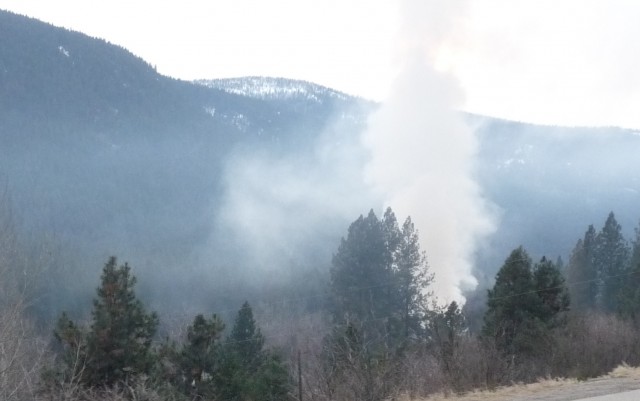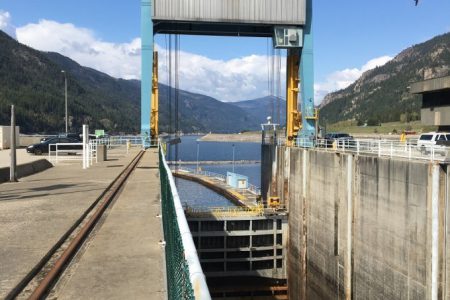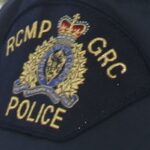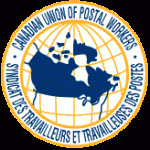Winter weather brings up air quality concerns
Wintertime in Grand Forks can mean anything from great skiing, to slippery roads but one of the greatest challenges on any winter day in the valley is the air quality. Winter brings a variety of weather patterns, but it is well-known to see inversions set in over the valley. Inversions sandwich warmer air up high with the colder air below and prevent air flow. Coupled with industrial emissions and higher levels of wood-smoke, these inversions can lead to poor air quality in the Grand Forks area.
The provincial ministry of environment is tasked with monitoring air quality around B.C. and the local Boundary air quality committee (BAQC) has been working with them to address the problems plaguing the Grand Forks valley. Air quality readings from two sites – the airport and city hall – are live on the B.C. air quality website.
“One of the main contaminants of concern in the interior of B.C. is particulate matter. This is a reflection of the kinds of emissions we typically have and topography. We have valleys and mountains and this presents challenges to us. Particulate is any solid material or water droplet that’s less than 2.5 microns in diameter – that is microscopic,” said Paul Willis, air quality meteorologist for the Kootenay region with the Ministry of Environment.
“The problem is that it is a by-product of combustion. It can be due to industrial sources, solid wood being used as a heating source, and automobiles also produce particulate but they are less of a player.”
Willis said the main sources of particulate are industry, heating sources, slash burning, and wild fires. Particulate matter is small enough to get past our upper respiratory system. It can enter the lungs and can interrupt the oxygen / blood exchange, explained Willis. Once you get it into your system it can cause respiratory and cardio problems, and that, said Willis, is the main concern.
The air quality site shows live hourly particulate averages and a rolling 24-hour average. These averages are then matched against the daily goal of less than 25 units per day. Air quality advisories are issued when the readings are higher than the goal.
“The objective is really the Federal government’s standard for air quality,” said Councillor Chris Moslin. Moslin has been the city’s representative at the Boundary air quality committee for several years. “A community cannot exceed that goal more than two-per-cent of the time. That’s roughly two-per-cent of the year or seven days.”
Moslin said that in 2005 – 2006 Grand Forks was in excess of the Federal standards for more than seven days of the year (the two-per-cent goal) but that improvements have been recorded in recent years. Particulate matter in the air is influenced by the air pressure, moisture content of the air, winds, and other atmospheric conditions. Moslin said that the provincial government’s annual goal is that the air quality in a community should not exceed eight micrograms on average over a year. Willis, however, watches the daily averages in order to be able to alert the community as needed.
“There are other objectives: world health organization, federal objectives that we also look at, but they are more over a year’s time,” said Willis. “Provincially, we’re looking at short-term episodes and how do we react to them.”
In the B.C. Lung Association’s recently released annual report comparing 2008 data between communities across B.C., Grand Forks air quality has shown improvements. Moslin said that this was the first time Grand Forks had a whole year of data so that it could be included in the report.
“Our air quality did change at the beginning of 2008 with the demise of Canpar. It’s a comprehensive report. At our highest value in 2008 we were down to 18, which was down from where we were previously. It is lower than a few communities, but it’s still up there. We were below the provincial objective in 2008,” said Moslin.
Moslin explained that the proposed woodstove bylaw report brought before council in late 2009 was to apply only to the air quality advisory days when the readings were in excess of the standards. Moslin predicts that there will be air quality advisories during the winter season, although to date there have been none.
Both Moslin and Willis agreed that people can help by just using their common sense. “If you look outside and you can see a haze at low levels, then it isn’t good!” said Moslin. “In these situations you should avoid all unnecessary burning and if you need to burn use dry, seasoned wood in an up-to-date appliance.”
B.C. Lung Association State of the Air report 2009



























Comments